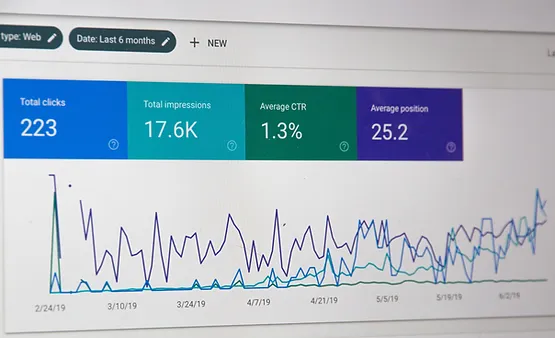Updated: Dec 15, 2022
If you’ve been following phase one of building a content strategy, by now you should have already clearly defined your:
1. Audience
2. Message
3. Channels
Once you’ve presented this in one solid document to your whole department or company (maybe around September time) , everyone should be on the same page. Phase two of the content marketing strategy is where we start to craft and implement content, based on these initial findings. The next section will focus on SEO strategy, building customer reviews and increasing your blog production.

Because things get very competitive in the run up to the new financial year, I’d suggest that personal financial companies, such as Stocks and Shares ISAs providers (which is my niche) do this from October until December. However, there is no right or wrong time to get started.



October: Optimise your web copy
By now you know what you’re saying and you know who you’re saying it to. Great! Now let’s say it on your web page.



Just like a shop in a street, you want people to be able to find you online by browsing around. For example, if you wanted to buy a pair of shoes in town, you might not know the name of the exact store but you’d probably know which area to walk to. You’d head to the shopping centre, not the park.






In the same way, you want people to find you online by typing in the sort of product or service you offer. This is called the “search term” or “keyword”. Obviously if someone typed in your exact brand name they’d expect to find you – the same way as if you drove to a specific store. Implementing SEO isn’t really for those people, it’s for the browsers.
There’re two steps to optimising your web copy:
1. Finding out what your people are typing into Google to find your product
2. Making sure that your text matches so that you get found
You can find what people are typing in with SEO platforms such as Moz, SEMrush and AH Refs. There are also some free alternatives available if you’re on a budget. I’ve listed these in the blog below.
Read more about essential free tools for copywriters here

When it comes to finding the your best search terms, at first it involves a bit of guesswork. You’ll have to estimate what people would type in for your product, for example, “Stocks and Shares ISA”. From there you should be able to get much more solid indications of how people are phrasing their search queries. Then it’s up to you to make sure that your web copy matches up. You should especially focus on your product and home page. Here are some top tips to help optimise your website:
- Include key search terms in headings (H1, H2)
- Include key search terms in URL addresses
- Add alt text to all your images
- Add inbound links across your website
- Make sure your pages load quickly
- Ensure your site works well on mobiles as well as desktop
- Include credible authors for your text (whose title and experiences matches with their LinkedIn page)
- Add a blog section
- Make sure your site is easy to navigate for users
To find out more about implementing SEO on your website, check out this expert SEO guide.






November & December: Stockpile a collection of strategic blogs
The search terms for your product will change over time, it’s only natural as you and your customers evolve. Writing blogs is a clever way to stay on top of the changing search terms without overhauling your whole web copy.






- Strategic & Tactical blogs There are a few different approaches to writing blogs. How you chose to enrich your site with blogs will depend on your goals and audience. Generally, it’s good to have a mix of strategic blogs to hit those evergreen sure-fire search terms and build trust with customers, as well as some tactical blogs. Tactical blogs tend to take advantage of opportunities which pop up from time to time. For example, one of the most searched terms on google is “when is mothers’ day?”, picking up around 450,000 searches each month. While your product may not be strictly about mothers’ day, you could still benefit from this search term. For instance, if you sell flowers you could incorporate this search term into a blog heading and get more traffic to your site. However you need to be careful to ensure that your content is always relevant and interesting for customers.
- Blogs are the most effective form of marketing Customers will spend less than one second looking an advert on average, and more than 123 seconds reading a blog[1]. Time and time again content has been proved to be the most effective marketing tactic, and by far the cheapest.
Recently the Content Marketing Institute[2] even found that it costs 62% less than traditional marketing but brings three times as many leads.
- Building trust and adding value Blogs are a fantastic way to build relationships with your customers and keep them moving around your site. But the key to unlocking this is to stay very helpful and benefit the customer. Don’t bang on about yourself but show the customer something that will add value to their life. It could be entertaining, educational, informative or inspirational- depending on your service.






You should be aiming to post at least two blogs a week if you want to make an impact. The process of getting them ready can be exhausting.
They’ll need to be researched, produced, edited (after numerous feedback loops), compliance-approved and then published with images. You’ll also need to add alt text, meta data and more. …. The process can be incredibly time consuming.
Each blog can take upwards of a week, especially if you have other responsibilities. It’s therefore a good idea to stockpile blogs. They are too valuable to miss out on, and should be done properly, it’s the least your customers deserve.

Aim to have a bank of content which is all ready to go. If you start around November, you could be publishing between two and three blogs week from January to April. This will help you stay competitive across Search Engine Results Pages in the run up to the new year. (This is more relevant for financial firms).

If you have a little budget, I’d recommend bringing in an experienced freelancer or copywriter to help with the extra workload.
If you’d like to work with me to get your blog stockpile ready, please just send me an email.
November & December: Get your customer reviews up
Now is the time to ramp up your customer reviews with platforms such as Trustpilot or Google Seller Ratings. SEMRush has written this really compelling blog about which platforms are the best for SEO. They found that Trustpilot offered the best SEO boost, followed by FeeFo.

However, it’s not all about SEO and the review platforms give you another really important window into how your customers perceive you.
The good, the bad and the ugly – you’ll get some really blunt honesty, warts and all … but unfortunately so will everyone else. You don’t want to be dealing with this in the run-up to April. If you want some tips on how to handle bad reviews, here is a useful guide, published by Forbes.



Once you’ve established your audience, message and channels (phase one of the strategy) and optimised your website, it’s time to focus on improving and increasing reviews.
Why? Here are some compelling facts and stats about customer reviews which could boost or sink your business:
- 90% of customers read a review before purchasing a product[1]
- Good online reviews lead to increased sales[2]
- 88% of consumers read reviews to determine the quality of a local business[3]
- 72% of people will only interact with brands that have positive reviews[4]
Pretty compelling right? There are lots of ways to increase your reviews. Sharing positive feedback on your social networks, offering incentives and replying to every message all help. Bob Phibbs has written this useful list of suggestions to get your reviews off the ground.






Responding to reviews also gives you a valuable opportunity to engage with your audience, which helps to build a relationship. In a recent survey, 77% of Twitter users appreciate a brand more when their tweet is responded to [5].



This blog is designed to be helpful, but it does not constitute advice.
[1] https://planetmarketing.com/blog/why-are-reviews-important/
[2] https://planetmarketing.com/blog/how-to-get-star-ratings-in-your-google-adwords-ads/
[3] https://www.brightlocal.com/research/local-consumer-review-survey-2014/
[4] https://planetmarketing.com/blog/why-are-reviews-important/
[5] https://www.smallbizgenius.net/by-the-numbers/advertising-statistics/




